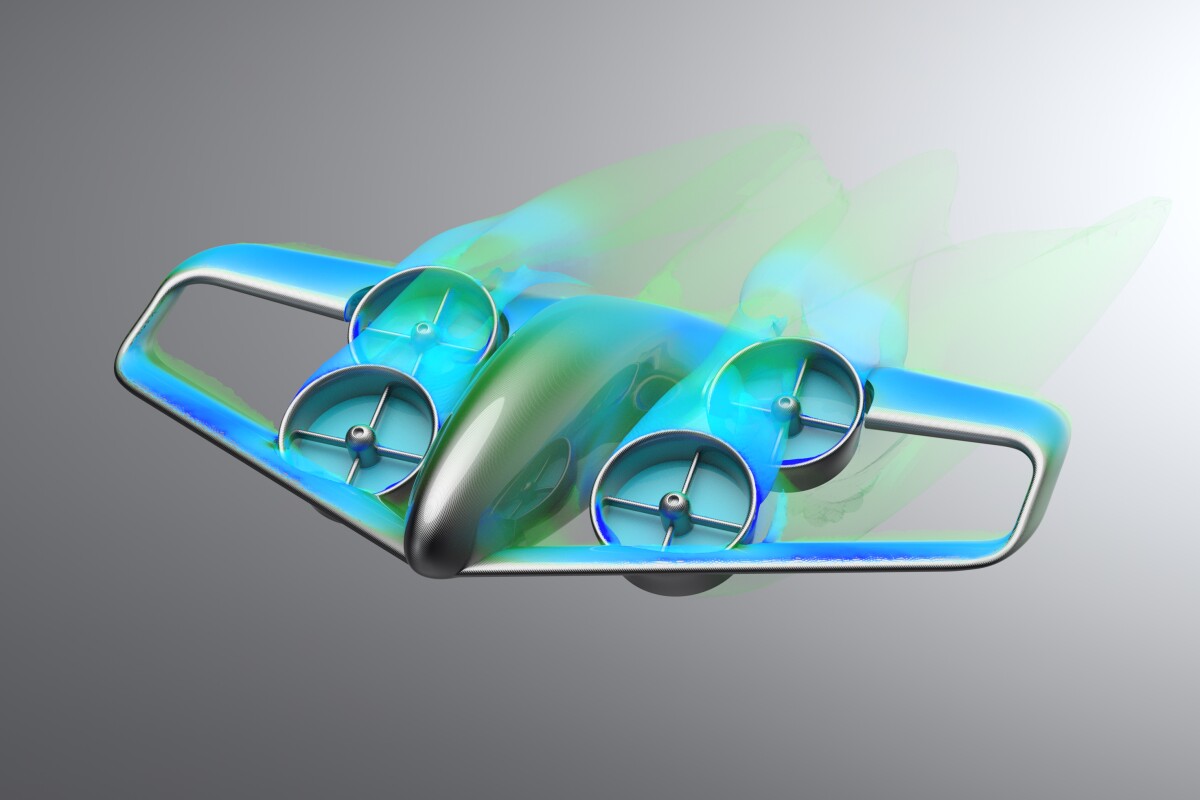수많은 회사가 신흥 전기VTOL 에어택시 시장에서 경쟁하기 위해 분투하고 있다. 그런데 더디어 50인승이 나온 것이다. 대부분의 드론택시는 5명 이상이 탑승한 항공기 설계가 없다. 그러나 영국의 다국적 거대기업인 GKN Aerospace는 훨씬 더 큰 드론택시를 설계하고 있다. "파크 앤 라이드" 스카이버스는 혼잡한 지역을 가로 질러 30 ~ 50명의 승객을 태울 수 있고 저렴한 대중교통을 3차원 즉 하늘로 이동할 수 있다.
이 이니셔티브는 영국의 Future Flight Challenge의 일환으로, 정부 현금 약 1억 2,500만 파운드 (미화 1 억 7100 만 달러)와 산업부문에서 추가로 1억 7천 5백만 파운드 (미화 2 억 3,900 만 달러)를 사용하여 다음과 관련된 다양한 프로젝트에 자금을 지원한다. 드론 무리 및 전달 기술, 자율무인항공기 및 항공기의 거대한 유입을 처리 할 수있는 항공교통제어를 포함 전기 항공, 등 eVTOL 에어택시, 센서기술, 산업 검사 무인항공기 및 기타 프로젝트 코번트리 eVTOL 팝업 공항 즉 도로에서 수직상승하는 드론택시 등장의 시대로 옮겨가고 있다.
대부분의 승객 운반 eVTOL 프로젝트가 개별 승객 또는 소규모 그룹을 양쪽 끝에서 승차공유 서비스로 연결하는 주문형 Uber스타일 서비스로 예상되지만, Skybus프로젝트는 대중교통 접근방식을 취하며 큰 새같은 드론택시가 많은 사람을 나르려고 한다. 이 스카이버스 서비스를 고정된 일정에 도시 노선으로 준비를 한다는 것이다. 영국, 그리고 이어서 유럽이 스카이버스 프로젝트를 시작한다.
GKN에 따르면, 이것은 효율적이고 저렴한 방법으로 도시 간 통근시간을 줄이는 동시에 지상 기반 대중교통의 부담을 줄이고 다른 모든 사람들이 더 빨리 일할 수 있도록 도로상의 공간을 확보 할 수있다고 주장한다. 지상기반 대중교통시스템의 시대가 가고 공간기반 대중교통시스템의 시대가 다가오는 것이다.
물론 그러한 항공기는 아직 존재하지 않는다. 타당성조사 단계에 있다. 그리고 관련 될 수있는 몇 가지 도전에 대해 생각하는 것은 확실히 흥미롭다. 이 거대한 스카이버스가 일반 버티 포트 나 헬기장에서 작동할 수있는 방법은 없다. 지상에 꽤 심각한 인프라가 필요하다.
그리고 캐빈 크기를 확장하고 소수가 아닌 수십명을 태우기 시작할 때 에너지 효율성을 얻을 수 있는지 여부를 고려해야하는데 에너지 요구사항이 클 것이다. 이는 거대한 배터리팩 (배터리-전기 파워 트레인)을 의미하는 것이 아니라 해당 지상국에서 엄청난 충전기능을 갖춰야 한다. 전력망에 수 메가와트 부하를 가하는 충전소의 종류를 설치해야한다.
수소동력전달장치로 이동해도 현장에서 심각한 H2대량생산문제 또는 충전을 위해 그곳에 공급하는 물류문제에 직면한다. 항공기 자체의 거대한 연료전지 스택은 말할 것도없고 변환이 가능해야한다. 전기 VTOL 작업의 극한 전력수요를 처리하기 위해 매우 인상적인 속도로 H2를 전기로 변환해야한다.
기체 자체가 너무 많은 무게를 가져야하는데 이런 문제를 해결하고, 전기 모터기술을 확장하는 것도 비교적 간단하다. 이 보도자료와 함께 제공되는 렌더는 효율적인 수평비행을 위해 이중 날개가있는 틸트 로터 쿼드콥터로 보이는 디자인을 보여준다.
하지만 실제로 무언가가 만들어지면 결국 만들어 질 수있는 것과 유사하지 않을수 있다. 4개의 로터는 중복된 안전을 제공하는 데 도움이 안되는 등 다양한 도전과제가 많다.
GKN은 파트너 Swanson Aviation Consultancy, Pascall + Watson 및 Connected Places Catapult가 참여하는 브리스톨의 새로운 글로벌 기술센터에서 Skybus프로젝트를 이끈다. Pascall + Watson은 운송 중심 아키텍처 및 디자인을 전문으로하므로 인프라 측면을 다룰 것으로 예상된다.
GKN Aerospace는 항공우주산업에 대한 괴물 기체, 엔진구조, 랜딩기어 및 부품 공급 업체로, 14개국에 48개의 공장과 17,000명의 직원을 보유하고 있으며 2019년에는 약 38억 5천만 파운드 (US $ 527 억)의 매출을 기록하고 있다. 숫자가 쌓이고 프로젝트가 녹색으로 켜질 경우 이러한 설계, 프로토 타입 및 제작과 같은 것을 얻을 수있는 전문 지식, 시설 및 시설을 확실히 갖추고 있다. 주목해야 할 흥미로운 프로젝트이다.
출처 : FutureFlight 를 통한 GKN Aerospace
GKN Aerospace proposes eVTOL Skybus transports for 30 to 50 passengers

While a multitude of companies are jostling to compete in the emerging electric VTOL air taxi market, it's very rare to find aircraft designs carrying more than five people. But British multinational giant GKN Aerospace is looking into something much bigger: "park 'n' ride" Skybus transports capable of carrying 30 to 50 passengers across congested parts of town, moving affordable public transport into the third dimension.
This initiative is part of the UK's Future Flight Challenge, which is using some £125 million (US$171 million) of government cash and a further £175 million (US$239 million) from the industrial sector to fund a wide range of projects related to electric aviation, including drone swarm and delivery technologies, air traffic control that can handle a huge influx of autonomous drones and aircraft, eVTOL air taxis, sensor technologies, industrial inspection UAVs and other projects like the pop-up eVTOL airport in Coventry we wrote about yesterday.
Where most passenger-carrying eVTOL projects are envisaged as on-demand Uber-style services connecting individual passengers or small groups with ride-share services at either end, the Skybus project takes a public transport approach, with large birds ferrying significant numbers of people over city routes on fixed schedules.
According to GKN, this offers a chance to reduce cross-town commute times in an efficient and affordable way, while reducing strain on ground-based public transport to boot and freeing up space on the road for everyone else to get to work quicker too.
Of course, no such aircraft exists yet; this is likely at the feasibility study stage. And it's certainly interesting to think about some of the challenges that might be involved. There's no way these giant skybuses would be able to operate on regular vertiports or helipads; they'd need some pretty serious infrastructure on the ground.
And whether or not there are energy efficiency gains to be had as you scale up cabin sizes and start carting dozens of people around instead of a handful, the energy requirements are going to be pretty epic. That doesn't just mean huge battery packs (assuming a battery-electric powertrain), it means truly monstrous charging capabilities at those ground stations. The kinds of charging stations that put multi-megawatt loads on the power grid.
Move to a hydrogen powertrain and you're still faced with the problem of serious bulk H2 production on site, or else the logistics of getting it there for fill-ups – not to mention colossal fuel cell stacks in the aircraft themselves, capable of converting that H2 to electricity at a very impressive rate to handle the extreme power demands of electric VTOL operations.
The airframes themselves shouldn't pose too many deal-breaking issues, and likewise it's relatively simple to scale up electric motor technology. The render supplied with this press release shows what appears to be a tilt-rotor quadcopter with dual wings for efficient horizontal flight, although we don't imagine this bears any resemblance to what might eventually be built, if indeed anything does get built. Four rotors offers very little in the way of redundant safety and we'd be very surprised to see things go that way.
GKN will be leading the Skybus project out of its new Global Technology center in Bristol, with partners Swanson Aviation Consultancy, Pascall+Watson and Connected Places Catapult joining the charge. Pascall+Watson specializes in transport-focused architecture and design, so we imagine they'll be tackling the infrastructure side of things.
GKN Aerospace, for its part, is a monster airframe, engine structure, landing gear and component supplier to the aerospace industry, with 48 factories and 17,000 employees across 14 countries and some £3.85 billion (US$5.27 billion) of sales in 2019. So it's definitely got the expertise, the facilities and the wherewithal to get something like this designed, prototyped and built should the numbers stack up and the project be green-lit.
Definitely an interesting project to keep an eye on.
Source: GKN Aerospace via FutureFlight




































